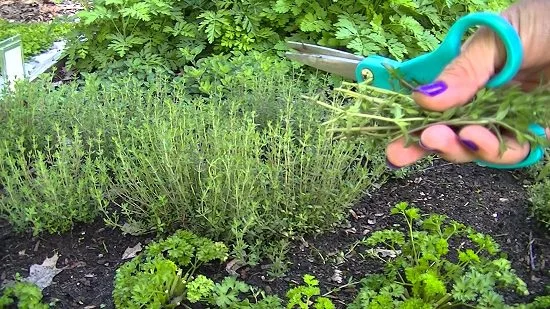Growing Herbs from Cuttings: An Easy and Time-Saving Method
Growing herbs from cuttings is a great way to save money and propagate your favorite plants more efficiently than starting from seeds. There are three types of cuttings you can use: softwood, semi-hardwood, and hardwood.
Types of Cuttings:

- Softwood Cuttings: Taken from young, tender stems that are still green.
- Semi-hardwood Cuttings: From stems that are partially mature.
- Hardwood Cuttings: From older, brittle stems that have turned brown.
Softwood cuttings generally have a higher success rate than hardwood cuttings, making them the preferred choice.
Steps to Propagate Herbs from Cuttings:1. **Select a Cutting:** Use a sharp tool to take a 3-6 inch cutting just below a leaf node.
2. **Prepare the Cutting:** Remove the lower leaves, leaving a few at the top to focus the plant’s energy on root development.
3. **Rooting Medium:** You can root cuttings in soil or water, but soil is preferable as it provides necessary nutrients.
4. **Rooting Hormone:** Dip the cut end into water, then into a rooting hormone to stimulate root growth. You can use commercial products or natural options like honey or aspirin.

Learn more about rooting herb cuttings and homemade rooting hormones here.
11 Herbs that Grow Well from Cuttings
- Thyme: Known for its culinary and medicinal uses, thyme cuttings should be taken from a leaf node and planted in damp soil, away from direct sunlight.
- Basil: Take a 4-5 inch cutting just below a leaf node and follow the steps above. Basil cuttings can also root in a glass of water near a sunny windowsill. Avoid taking cuttings from flowering parts.
- Sage: With its refreshing fragrance, sage is easy to propagate. Take a 6 cm cutting below a node, plant it in moist soil, and place it in a spot with morning sunlight. Sage cuttings can also be rooted in water.
-
Lavender: Best propagated in the summer, lavender requires a sharp knife, a small pot, soil, rooting hormone, and a clear poly sheet. Detailed step-by-step instructions are available here.
Check out our article on the best container herb combinations here and get the best basil growing tips here.
